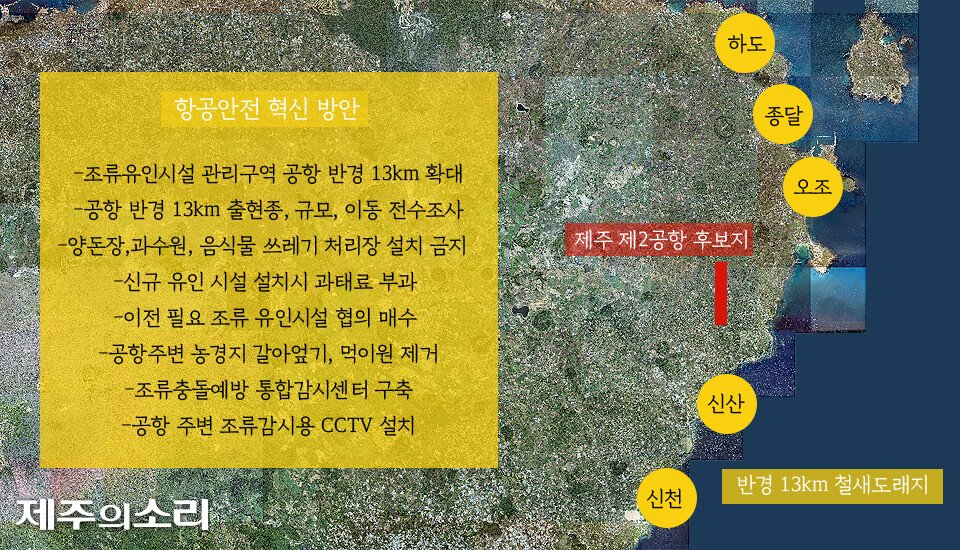Government battles bird attractants...Jeju Airport 2 'worst condition ever'
DOT Announces Aviation Safety Innovation Initiative
Eliminate Bird Sources within 13km of Airports
The government's declaration of an all-out war against bird strikes in the wake of the Jeju Air passenger plane crash at Muan Airport is expected to intensify the debate over the proposed site for Jeju's second airport.
30Japan's Ministry of Land, Infrastructure, and Transport announced the "Aviation Safety Innovation Plan" to strengthen safety supervision and establish a safety management system at airports nationwide, including bird strikes.
The plan focuses on fundamentally overhauling the aviation safety system to address public concerns raised by the December 29 airliner crash at Muan Airport last year.
Among other measures, the plan proposes to introduce advanced equipment and strengthen standards for nearby attraction facilities in response to the type of collision that was directly responsible for the accident.
The government has decided to expand the bird attraction facility management zone to a 13-kilometer radius around the airport, the current ICAO recommendation, to ensure aircraft safety. It plans to do so by amending the law.
Currently, Article 56 of the Airport Facilities Act and Article 47 of the Implementing Rules prohibit pig farms and orchards within a 3-kilometer radius of airports and food waste disposal sites within 8 kilometers to prevent collisions between aircraft and birds.
If the law is amended, the installation of facilities that attract birds within a 13-kilometer radius will be restricted. It will also make it difficult to designate bird sanctuaries in these areas.
The government has also decided to form win-win councils with local governments to clear agricultural land in these areas and remove bird habitat on private property.
In the case of Jeju's second airport, Sinsan-ri and Ojori are located within a 3-kilometer radius of the proposed site, Jongdal-ri and Sincheon-ri within an 8-kilometer radius, and Hadori migratory bird sanctuary within a 13-kilometer radius.
There are 172 species and 60,000 birds identified during the strategic environmental impact assessment process. MOLIT has only conducted collision risk assessments for 39 of these species, which have been confirmed to collide with aircraft at domestic airports.
In response to the controversy over the poor assessment, MOLIT has proposed a plan to conduct a full survey of the species, size, migration status, distribution, and habitat within a 13-kilometer radius through the Ministry of Environment.
The bigger issue is fish farms. There are 149 fish farms within a 13-kilometer radius of the proposed second airport. This area is considered to have the highest bird attraction factor compared to other facilities.
The government has proposed a negotiated purchase plan for bird attraction facilities, but this is not feasible. The government has proposed a negotiated buyout plan for bird attraction facilities, but it is a difficult measure in reality.
The Jeju Airport, which is currently in operation, will be designed and equipped with radar and drones for bird detection from 2026. It will also introduce artificial intelligence (AI) drones equipped with bird analysis and repellents.
The number of dedicated bird fighters will also be expanded from the current two to four. Thermal imaging cameras and a sonic boom to deal with medium and large birds will also be introduced. CCTVs for bird surveillance will also be installed around the airport.
MOLIT Minister Park Sang-woo said, "We will institutionalize the various improvement issues reflected in this innovation plan as soon as possible," adding, "Through this, we will dramatically improve domestic aviation safety."


